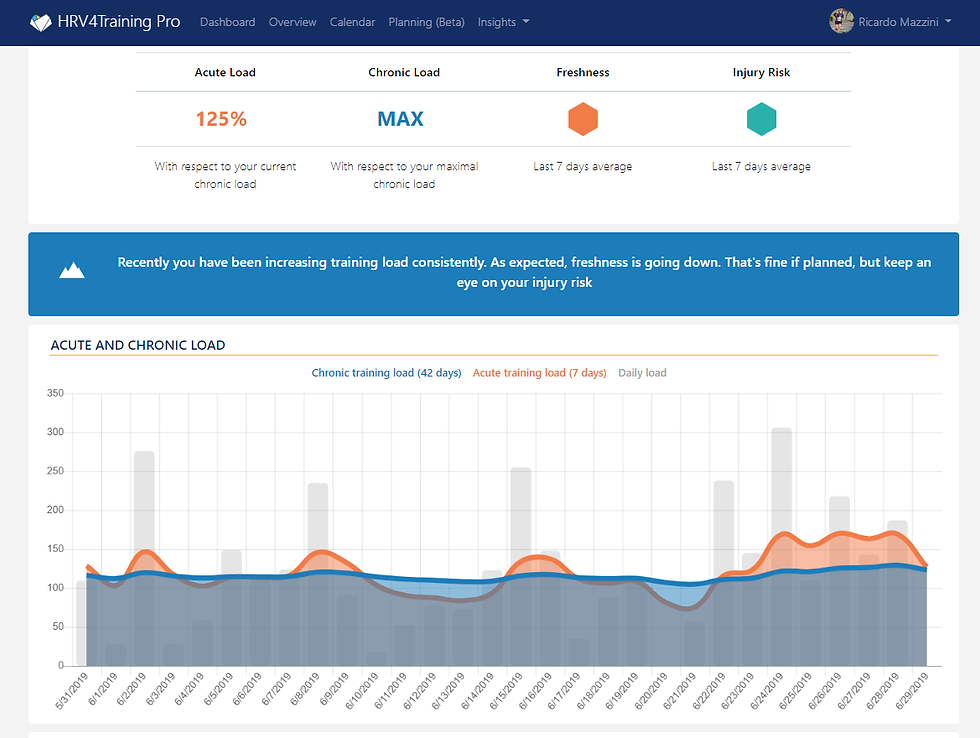HRV and Altitude Training
- Ricardo Mazzini
- Jul 4, 2019
- 2 min read
For the past 10 days I’ve been training at Boulder, which is about 1,600 meters above sea level (some days we reached 3,700 meters!). Doing most of my training at sea level, I knew this was going to be a challenge. I kept measuring my HRV during this time as I love seeing how changes in the environment affect my HRV. Of course, there are other factors to take into consideration when looking at the HRV trends besides altitude: travel, sleep (I was sleeping on a couch!), training load, diet, stress etc. However, I thought it would be interesting to share some of my trend after this week. Using the HRV4 Training Pro allowed me to easily see these changes.
As it was expected, my HRV trends during these past 10 days were lower than average, as well as an increased resting heart rate. What is also interesting, is how the lack of oxygen affected my V02max. I know it seems obvious, as it becomes harder to breathe, but this shows how environmental stressors can affect performance. On average, V02max was -4.8% lower than my normal values (from 62 to 59ml/kg/min), and my Heart Rate was +4.7% higher (from 42 to 44 bpm average).


Another added factor to my lower HRV readings these past days was attributed to the short-term ramp up in training. Though I am a well-trained individual, training around 15-18 hours per week, I reached an average of 28 hours this week. This is almost double my usual training load. This was another contributing factor to my declining trends. Let’s just say it was a shock to the system in many levels! As expected, freshness was lower than average (that’s an understatement!).

There were some key learnings I took from my time at Boulder. First, as it is expected, performance will suffer while training at altitude, or in different environmental conditions. Therefore, it’s important to keep an open mindset, and enjoy the dose of additional stressors you are putting into your body. This brings me to my second point. Though I don’t recommend doubling your training in a single week, putting your body through constant changes will help it adapt quicker and get stronger. This should be done under strict supervision of your coach, of course, adhering to the prescribed intensities, and truly respecting the easy recovery days. Higher loads, altitude, and hot weather will also require you to significantly increase your fluid, sodium and carbohydrate requirements. Yes, I ate a lot! On bigger days, 800g+ of carbs was probably a good starting point. Don’t worry about counting calories and carb up! Finally, and probably one of the most important things I learned from this experience, is that in order to perform at high levels in endurance sports, you MUST train your aerobic engine. This means, higher loads at lower intensities. I don’t think I would have survived one day at Boulder had it not been for this.
This is the first part of a two-part article. This coming week is taper week and race week at sea level! I will see how the body reacts and how my HRV trends change. Thanks to my coach Inaki de la Parra and Nathan for an amazing week at Boulder!

























Comments